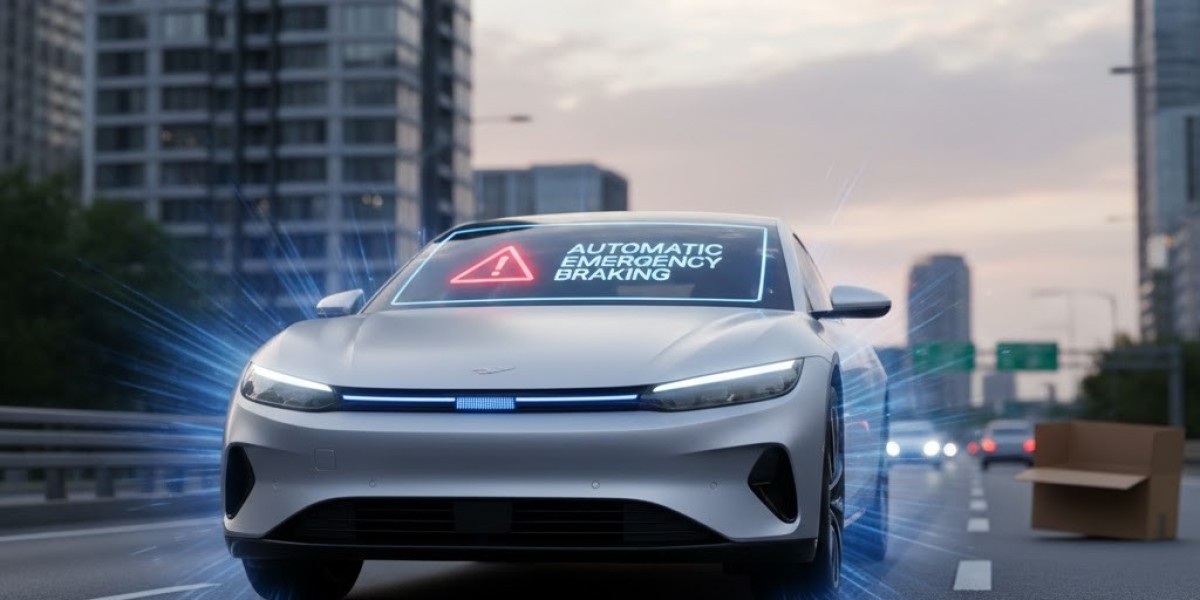The global Automatic Emergency Braking (AEB) market is on a steady upward trajectory, with market size projected to grow from an estimated USD 70.1 billion in 2025 to USD 114.2 billion by 2035, representing a CAGR of 5.0%. This growth reflects a robust and consistent adoption of AEB systems by automakers, fleet operators, and regulators worldwide, underpinned by rising vehicle safety standards, technological innovations, and evolving consumer expectations.
Steady Adoption Across Passenger, Commercial, and Electric Vehicles
AEB adoption is increasingly becoming a standard in passenger cars, commercial vehicles, and electric vehicles (EVs). Passenger cars dominate the market, accounting for 40% of total demand, driven by regulatory mandates and safety rating requirements from organizations such as Euro NCAP, IIHS, and NHTSA.
Commercial vehicles contribute 25%, as fleet operators and logistics companies aim to reduce accidents, liability, and insurance costs. Meanwhile, the EV segment, accounting for 15% of demand, integrates AEB as part of comprehensive Advanced Driver Assistance Systems (ADAS) to enhance safety and differentiate offerings in a competitive market.
Shared mobility and ride-hailing platforms represent 12% of the market share, emphasizing the growing importance of passenger safety and liability reduction. Finally, aftermarket and retrofit solutions capture an 8% share, allowing vehicles without factory-installed AEB systems to benefit from enhanced safety features, creating incremental revenue streams for manufacturers and service providers.
Key Market Drivers: Regulations, Consumer Awareness, and Fleet Modernization
Regulatory mandates remain a primary catalyst for growth. Governments in North America, Europe, and Asia have made AEB systems either mandatory or highly incentivized for new vehicles. OEMs are aligning product portfolios with regional safety standards to achieve compliance and maintain reputational credibility. Insurance incentives, crash-test ratings, and penalties for non-compliance further accelerate adoption.
Consumer awareness also plays a pivotal role. Increasingly, buyers prefer vehicles equipped with collision avoidance technologies that reduce the likelihood of rear-end accidents, pedestrian collisions, and urban traffic incidents. Fleet operators, particularly in ride-hailing and delivery services, are adopting AEB to safeguard passengers and reduce operational risks. Marketing campaigns highlighting real-world crash prevention benefits, along with the inclusion of AEB in ADAS bundles, strengthen adoption across segments.
Segment Insights: Low-Speed AEB and Radar-Based Technologies Lead the Market
Among AEB types, Low-Speed AEB Systems hold a 39.4% share in 2025. They are particularly effective in urban traffic environments where minor collisions are prevalent. Rising urbanization, pedestrian activity, and government initiatives for city road safety are driving this segment’s adoption. Fleet operators and shared mobility providers also prefer low-speed AEB to minimize repair costs and enhance passenger safety.
Technologically, Radar-Based AEB Systems lead the market, contributing 41.8% of total revenue. Radar’s reliability in diverse weather and lighting conditions, coupled with long-range detection capabilities, makes it the preferred choice for urban and highway applications. Its affordability relative to LiDAR and integration flexibility with cameras through sensor fusion further reinforce adoption, especially in mid-range and economy vehicles.
The Disc Brake segment dominates braking technology, with 66.5% of the market share in 2025. Its superior stopping power, heat dissipation, and reliability under repeated braking conditions make it ideal for AEB systems. Innovations in materials such as carbon-ceramic composites enhance durability while maintaining lightweight performance, crucial for modern vehicle efficiency and safety.
Regional Market Outlook
- The AEB market is witnessing varied growth rates across regions. China leads with a CAGR of 6.8%, driven by rapid vehicle production, urban congestion, and stringent government safety mandates. Domestic manufacturers are collaborating with global technology providers to integrate radar, LiDAR, and camera-based AEB systems, while insurance incentives and consumer awareness further support adoption.
- In India, the market is expected to grow at a CAGR of 6.3%, supported by increasing ADAS integration in passenger cars, commercial fleets, and EVs. Collaborations between local manufacturers and international suppliers are accelerating the deployment of radar and ultrasonic technologies. Retrofit solutions for commercial fleets offer additional revenue opportunities.
- Europe, led by France (5.3% CAGR) and the UK (4.8% CAGR), continues to emphasize system reliability and regulatory compliance. Manufacturers are integrating advanced sensor technologies and fleet operators are investing in commercial safety upgrades. Insurance incentives and public safety campaigns bolster market penetration.
- In the United States, AEB is projected to grow at 4.3% CAGR. Federal safety regulations, insurance discounts, and increasing fleet electrification encourage adoption across SUVs, sedans, and commercial vehicles. Retrofit demand for older fleets, combined with collaborations between OEMs and technology providers, is enhancing system reliability and detection accuracy.
Competitive Landscape: Established and Emerging Players Driving Innovation
The AEB market is highly competitive, characterized by innovation in sensor technology, braking algorithms, and ADAS integration. Established players like Aisin Seiki Co., Ltd., Aptiv PLC, Autoliv Inc., BorgWarner Inc., Continental AG, Denso Corporation, Hella KGaA Hueck & Co., Hitachi Automotive Systems, Hyundai Mobis, and Robert Bosch GmbH are leading the charge with comprehensive radar- and camera-based AEB solutions. These companies emphasize precision, reliability, and durability across passenger and commercial vehicles.
Emerging players such as Mobileye (an Intel Company), Nvidia Corporation, and Veoneer Inc. are pushing boundaries with AI-driven vision systems and advanced decision-making platforms for collision prevention. Companies like Delphi Automotive (now Aptiv PLC), Panasonic Corporation, TRW Automotive (now ZF), and ZF Friedrichshafen AG offer hybrid radar-LiDAR solutions adaptable to diverse traffic, urban, and low-visibility conditions.
Get this Report at $5,000 Only | Exclusive Discount Inside!
https://www.futuremarketinsights.com/reports/sample/rep-gb-25046
Checkout Now to Access Industry Insights:
https://www.futuremarketinsights.com/checkout/25046
About Future Market Insights (FMI)
Future Market Insights, Inc. (ESOMAR certified, recipient of the Stevie Award, and a member of the Greater New York Chamber of Commerce) offers profound insights into the driving factors that are boosting demand in the market. FMI stands as the leading global provider of market intelligence, advisory services, consulting, and events for the Packaging, Food and Beverage, Consumer Technology, Healthcare, Industrial, and Chemicals markets. With a vast team of over 400 analysts worldwide, FMI provides global, regional, and local expertise on diverse domains and industry trends across more than 110 countries.






